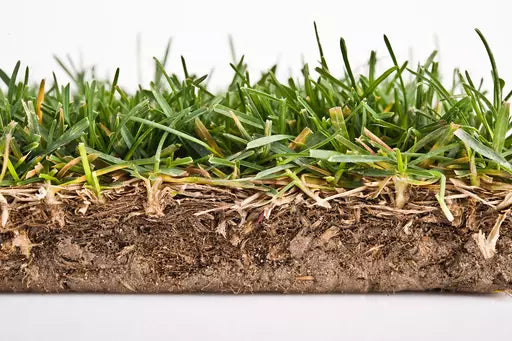
De-Thatching a Lawn
Share
What is Thatch?
Thatch is the layer between the roots and foliage of the grass, consisting of dead fibrous material such as old grass stems and leaves. Typically, excessive thatch is usually only found in long-established lawns. Where thatch becomes excessively thick, it can impede moisture penetration into the soil. Fertiliser may also not be able to penetrate the soil and in very wet conditions, the thatch may also become saturated with water. In conditions of poor drainage and lack of aeration to grassroots, diseases can quickly become established. De-thatching can help with these issues.
When is the best time to de-thatch your lawn?
De-thatching is best carried out in spring/early summer. This is the time of vigorous growth of your lawn as the soil and air temperatures rise.
How to deal with thatch
There are times with a lawn when it is necessary to mow it almost to ground level to control thatch. This can require several successive mows to remove all the surplus grass growth and should help remedy any serious build-up of thatch.
Another option is to try using a de-thatcher attached to your lawnmower or hire a lawn scarifier/de-thatcher. While de-thatching is traditionally a spring task, the best course of action would be to do it while there is sufficient 'warmth’ in the soil to encourage new grass growth before winter.
In early spring, apply Daltons Premium Lawn Fertiliser to promote strong grass growth while at the same time, continuing to mow the lawn with the lawnmower on a very low setting. Mow regularly throughout summer to prevent a build-up of thatch. Approximately, every three to four years, in spring, repeat the process of mowing the lawn almost to ground level. You may need to over sow with fresh grass seed where bare patches appear.
